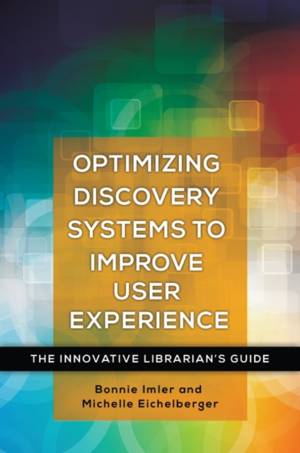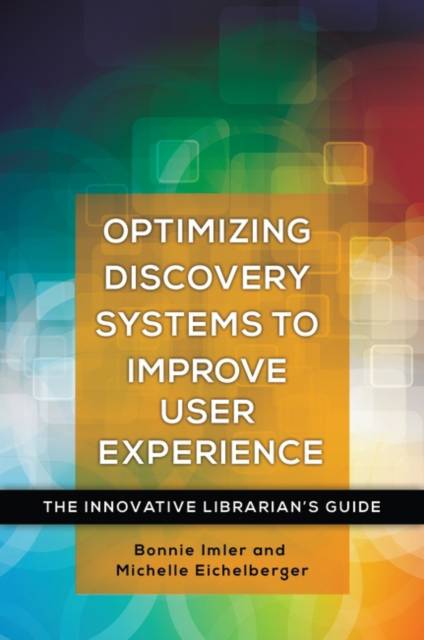
- Retrait gratuit dans votre magasin Club
- 7.000.000 titres dans notre catalogue
- Payer en toute sécurité
- Toujours un magasin près de chez vous
- Retrait gratuit dans votre magasin Club
- 7.000.000 titres dans notre catalogue
- Payer en toute sécurité
- Toujours un magasin près de chez vous
Optimizing Discovery Systems to Improve User Experience
The Innovative Librarian's Guide
Bonnie Imler, Michelle Eichelberger
101,95 €
+ 203 points
Description
Two authors with more than 40 years of combined library experience tap into their wealth of knowledge about discovery and user experience, sharing proven methods for setting up, promoting, and teaching their own discovery systems.
Discovery systems are the new one-stop search model for libraries, but simply implementing the software doesn't ensure that it will meet your users' search needs. This book looks at how discovery systems are actually used by examining the findings of several user experience (UX) studies, providing data and observations that will inform your decisions about selecting, implementing, and enhancing this software. This book provides library practitioners who choose, administer, and interact with discovery systems with insight for establishing or fine-tuning a discovery system. You will understand how the use and effectiveness of the top discovery systems compare to more traditional databases and web resources, get insight into the comparative strengths and weaknesses of the best-selling discovery systems, and examine the UX research findings of the authors on student response and faculty response. You'll also learn about key configuration options that help or hinder search success with these systems and affect content selection, linking software setup, and interlibrary loan processes. The book concludes with recommended best practices for promoting discovery systems, including web design, placement on the library's website, getting coworkers on board, and PR ideas.Spécifications
Parties prenantes
- Auteur(s) :
- Editeur:
Contenu
- Nombre de pages :
- 150
- Langue:
- Anglais
- Collection :
Caractéristiques
- EAN:
- 9781440843822
- Date de parution :
- 24-05-17
- Format:
- Livre broché
- Format numérique:
- Trade paperback (VS)
- Dimensions :
- 155 mm x 231 mm
- Poids :
- 258 g







